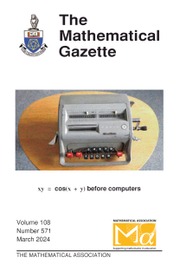No CrossRef data available.
Article contents
The Development of Geometrical Methods
Published online by Cambridge University Press: 03 November 2016
Extract
From this moment a brilliant period opens for geometrical research of every kind. Analysts interpret all their results, and set to work to translate them by constructions. Geometers endeavour to discover in every question some general principle—in most cases impossible to prove without the aid of Analysis—so as to deduce a host of particular consequences, closely connected with each other and with the principle from which they are derived. Jacobi’s brilliant pupil, Otto Hesse, admirably develops the methods of homogeneous coordinates of which Plücker, perhaps, did not fully appreciate the value. Boole discovers in Bobillier’s polars the first notion of a covariant ; the theory of forms is created by the labours of Cayley, Sylvester, Hermite, and Brioschi. Aronhold, Clebsch, Gordan, and other geometers still with us, invent the definitive notation of the theory, establish the fundamental theorem relative to the limitation of the number of covariant forms, and thus succeed in giving to the theory its fullest extension and scope.
The theory of surfaces of the second order, constructed mainly by the school of Monge, is enriched by a large number of elegant properties—mostly due to Hesse, who later finds in Paul Serret a worthy rival and an investigator who will continue his work.
- Type
- Research Article
- Information
- Copyright
- Copyright © Mathematical Association 1905
References
* Krummungsschwerpunkt[Tr.].


